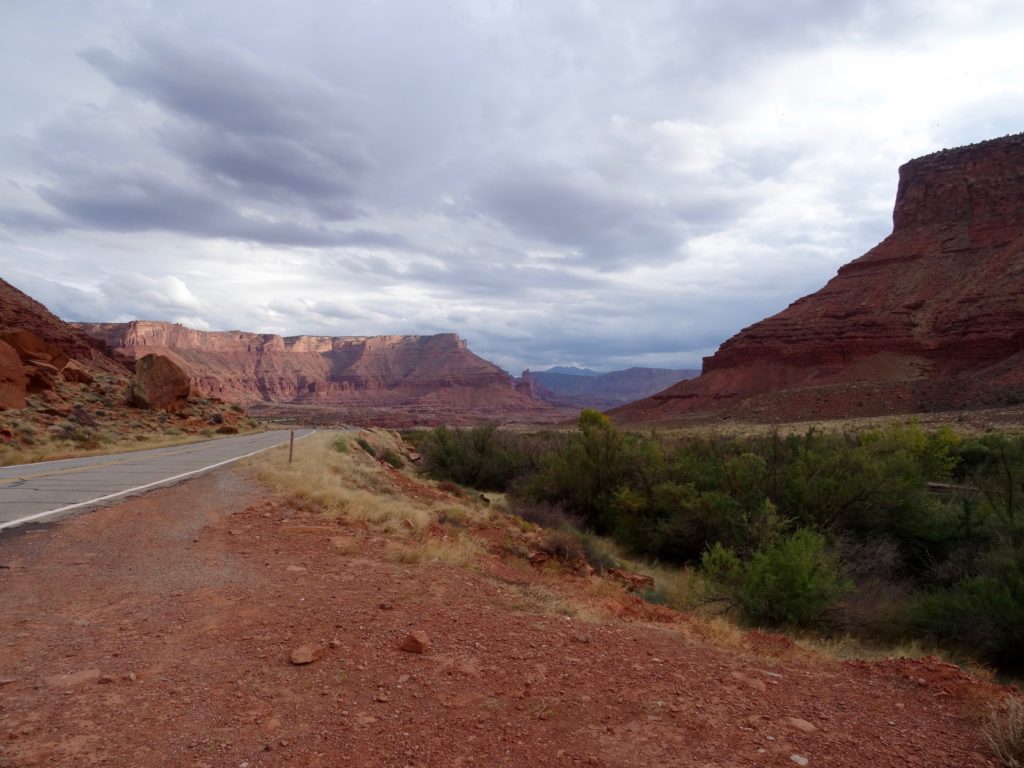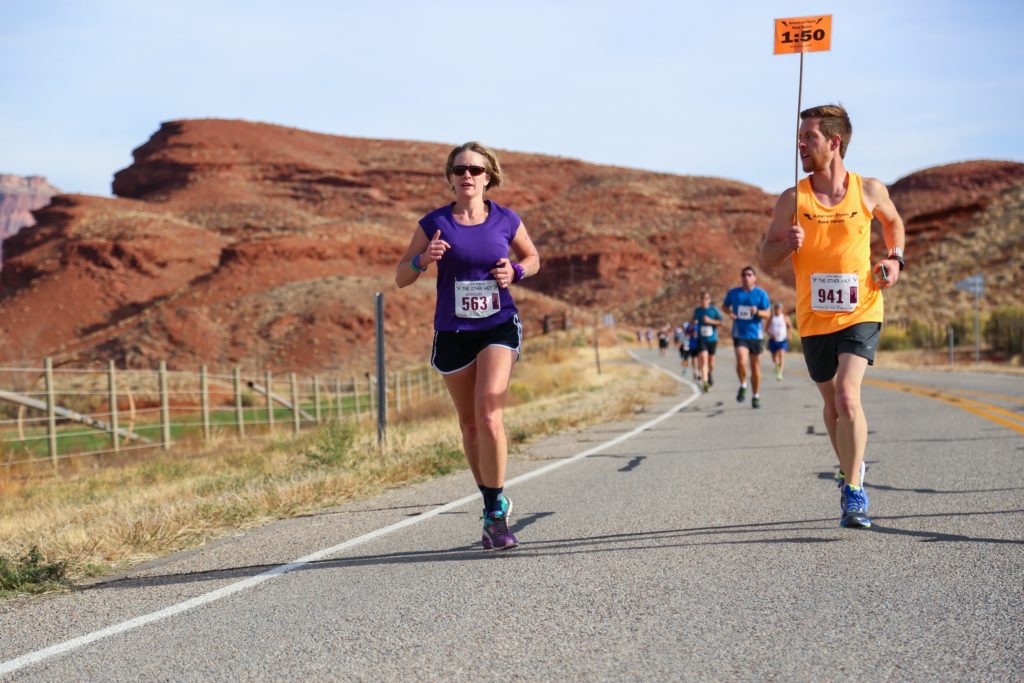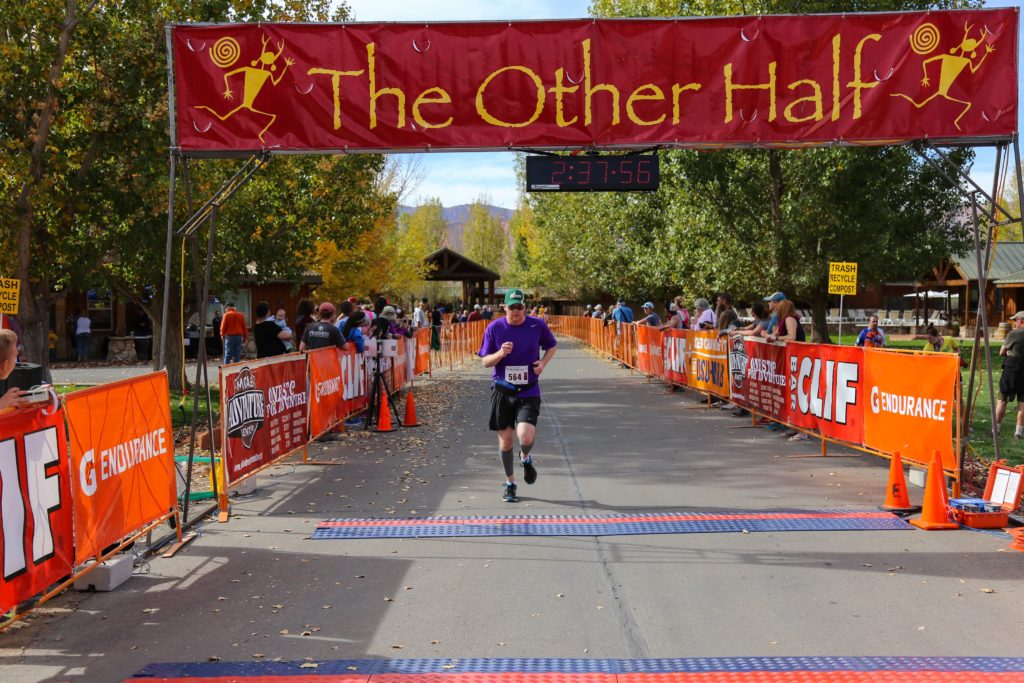I waited a long time to run for my sister, Taylor, in Utah: two years, or the amount of time since my most recent trip to one of the most beautiful places on our planet.
The last time I visited Utah with my husband, John, for eight days of hiking in Arches, Canyonlands and Capitol Reef National Parks, I was two states into a 50-state running journey. I’d never heard of posterior tibialis tendonitis or suffered a stress fracture. My sister was still walking.
Of course, a lot can change in two years’ time. Meanwhile, I’ve completed races in 15 states, wearing purple and carrying the banner for Batten disease across finish lines on college campuses and city streets, through mountain passes and alongside volcanoes. I’ve battled injuries and set personal records. I’ve shared Taylor’s story of courage with radio hosts while driving at 10,000 feet above sea level and with Boston Marathon qualifiers while running through the frozen forest on Martha’s Vineyard in February.
Our hosts for that 2014 Utah hiking trip, Vic and Anna Bruno of Moab, heard all about my sister and our fight against rare disease, and they recommended I run a half marathon called The Other Half the next time I could make it out to Utah. Set against a scenic backdrop that includes landmarks like Fisher Towers, Castle Rock and the snowcapped La Sal Mountains, the 13.1-mile course hugging the Colorado River reminds me how much beauty the blindness part of Batten disease has robbed from my sister.
But there was something else special about the race I chose for my 15th state:
I’d be sharing the course with my other half.
John will be the first to say he’s not a runner. But he’s a natural athlete and served as an able backup when I trained to run a half marathon blindfolded in 2013 and my regular guide and friend, Andrew, wasn’t available. He worked hard to get into shape for The Other Half, and long before sunrise on race morning, I found him sitting on the edge of our bed, adjusting his insoles in his shoes and pinning his bib on his shirt in a dark room when he could have been sleeping.
To get to the start line at the historic Dewey Bridge on Highway 128, we clambered onto a bus with clumps of other runners clad in wicking shirts and compression socks and aluminum blankets. At the bridge, we huddled together around fire barrels and snapped selfies and ate bananas and peanut butter sandwiches from our innkeepers’ kitchen. And when the starting gun finally sounded, we took off into the canyon.
Alone.
I think I always knew I’d run The Other Half by myself, even after twin postcards with race packet information came in the mail. But there was something special about running those rolling hills, Utah’s red rock towers and the cold waters of the Colorado and endless blue sky all around me, knowing that somewhere on the course, my husband was running for Taylor, too. And as great as it felt to sprint across the finish line on the Sorrel River Ranch, my heart swelled with pride when I watched John complete his first half marathon – only his second run of any distance farther than eight miles. And I knew then that even though we finished 48 minutes apart, we’d done the race together.
Nobody can fight rare disease alone. And from the moment John appeared in my parents’ driveway the day Taylor was diagnosed with Batten disease 10 years ago in July, I knew I wouldn’t have to do that.
At the end of the day, a race is just a race. For most of us, it doesn’t matter if we win or even if we finish. But when it comes to rare disease, it takes a real support team to survive. I couldn’t face Batten disease without my other half. I couldn’t face it without my family or friends who love and support me; my dog who nuzzles me after a bad day; the media that helps us share our story with the world; or the innkeepers who gave us a safe and friendly place to stay during our time in Utah.
I’m almost a third of the way through my quest to run in all 50 states for Taylor. But the fight for people like her will never stop. If you’re reading this, thanks for being part of the world’s best support team for the race that matters most.



